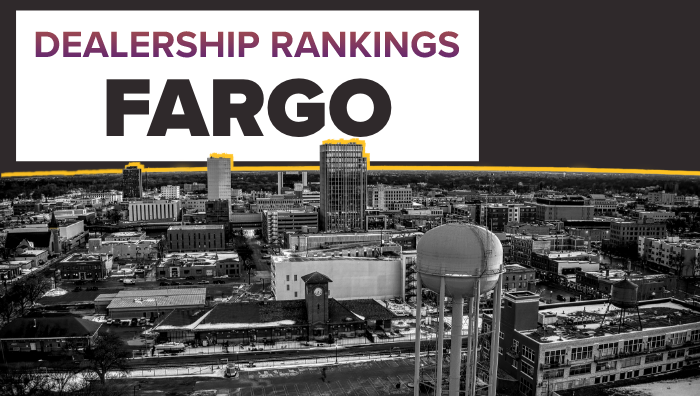Fargo, North Dakota, has steadily grown into a vital hub for the regional automotive market, connecting the northern plains to the broader U.S. transportation network. While not historically tied to large-scale automotive manufacturing, Fargo’s strategic location and vibrant economy have made it a key center for auto sales, distribution, and service in the Upper Midwest.
The city is home to numerous dealerships that cater to a broad audience, offering everything from heavy-duty trucks to fuel-efficient sedans. Today, Fargo’s thriving automotive industry reflects its adaptability and growth, with modern dealerships and service centers supporting the region’s dynamic economy.
Using the Automotive Reputation Index, which ranks dealers by review volume, star rating, and review response rate, we’ve identified the Fargo dealerships with the best online reputations.

- Kia of Fargo leads the pack in terms of overall dealership ratings. Strong volume, a high adjusted star rating, and a 99% response rate leave little room for improvement for this dealer.
- The Corwin family of dealerships has middling review volume and ratings, but their response rates are all under 40%. Responding to reviews is one of the more straightforward ways a dealership can improve its reputation score and we would advise the aforementioned dealerships to strategize around getting this number up.
- Volkswagen Fargo is one of the weaker dealerships in the overall rankings. Though it has a perfect response rate of 100%, its adjusted star rating is just 2.5 and it has virtually no review volume. To have a strong reputation, dealerships need online reviews. This dealer should focus its efforts on creating a review generation strategy to get more reviews.

- Looking at the bottom of our non-luxury dealership rankings, Mazda of Fargo stands out. While the dealership has room for improvement across the board, its biggest weakness is review volume. To strengthen its online reputation, we recommend focusing on increasing the number of customer reviews. More reviews from satisfied customers will not only boost its adjusted star rating but also give the dealership more opportunities to engage and increase its response rate, which currently sits at 81%. Overall, this will help present the dealership in a more positive light online.
- Luther Family Ford is another dealership facing challenges in key areas. While it has a decent review volume and a solid adjusted rating of 4.0, its response rate is just 2%, leaving significant room for improvement. To boost its reputation score, the dealership should focus on responding to more reviews. Increasing the response rate—aiming for over 99%—is a simple and effective way to improve its standing and move closer to joining the top dealerships in the region.
*Note from the editor. The Automotive Reputation Index offers substantial coverage of the nation’s dealerships, but it’s still growing. If your dealership is not yet listed on the Index and you’d like to add it, submit your information and we will add it during a regularly scheduled update, roughly once per month.
Widewail's rankings are based on the Widewail Automotive Reputation Index. Explore the full dataset:

Ranking Methodology
To rank these dealerships fairly, we chose a method that considers the fact that dealerships on our list receive a wide range of monthly review volume, in part due to varying levels of opportunity. For example, luxury brands can never sell as many cars as non-luxury brands, the price point limiting a luxury dealership's market.
To compare two dealerships with very different review volumes directly wouldn’t be fair. A dealer with two 5-star reviews doesn’t necessarily deserve to be ranked higher than a dealer with 200 reviews and a 4.5-star rating. With few reviews, the former doesn’t offer enough data for us to use to understand its performance. However, we couldn’t just ignore locations with very few reviews, as that would introduce bias into our rankings.
To solve this, we used "adjusted ratings" in our calculation of dealership ranking. In essence, "adjusted rating" is a dealership's star rating that takes into account how its review volume compares to that of other dealerships in that area. We calculated adjusted ratings by using a technique called additive smoothing which we explain below.
Additive Smoothing
The approach we’ve used is a form of what’s called “additive smoothing.” This process allows for an unbiased way to rank two otherwise unequal dealerships. At its core, additive smoothing levels the playing field by artificially increasing the number of reviews each dealership has by adding the same number of reviews of each star rating to every dealership.
Customer Engagement
Additionally, we take into account the percentage of reviews that a dealership has responded to in our calculation of ranking, as Widewail strongly believes that review response is indicative of a strong reputation strategy.
Activity
The last component revolves around how much review volume a dealership receives, which can be broken down into two parts - their lifetime volume and average monthly volume. Lifetime volume can be thought of as a popularity metric. It’s an important metric and one of the first numbers that a potential customer will see when they start looking at reviews. The second, average monthly review volume, is representative of how active the dealership currently is. We can think of it as follows, lifetime volume captures a historical view of the dealership whereas average volume gives insight into the current status. The final component for the volume metrics is to scale them so there is a more meaningful comparison. To do this we use what is known as min-max scaling. First we group dealerships by their respective city and then find the dealership with the most volume and least volume. Then for each dealer in the group, we subtract the lowest volume and divide by the difference between the highest and lowest volume. The formula for this can be seen below.
x' = x - min(x)max(x) - min(x)
The main advantages of this approach are that all the volume metrics can be mapped to a value between 0 and 1 and the relative difference between dealership volumes can still be preserved.
Below we see an example of this where we have 9 dealerships with differing lifetime volumes, which we then scale. Notice that the relative distance between the actual volumes and the scaled versions is the same.
Below we have an example of ten dealerships, their review volume, and the adjusted relative volume. We can calculate the relative volume by sorting the dealers by review volume and determining the percentage of dealers that have fewer reviews. Here we see that dealer D had the most reviews and so they get a score of 1.
|
Lifetime Volume
|
Scaled Volume
|
|
4619
|
1
|
|
4065
|
0.88
|
|
3922
|
0.85
|
|
1783
|
0.38
|
|
1001
|
0.21
|
|
810
|
0.17
|
|
164
|
0.03
|
|
101
|
0.02
|
|
22
|
0
|

The Ranking Formula
(adjusted rating / 5) * 0.3 + (response rate) * 0.3 + (lifetime volume) * 0.15 + (avg monthly volume) * 0.25
Weighting Rational
We chose to weigh each feature as follows: adjusted rating accounts for 30% of the overall score, response rate also accounts for 30%, and review volume is 40%, which is further broken down into lifetime volume (15%) and average monthly volume (25%).
Weight selection is based on Widewail’s depth of expertise in the industry and we believe is a fair representation of what should be considered a standout reputation.
We’ve broken the weighs into three categories:
Activity (40%)
We believe the amount of review activity is the most important indicator of reputation health for a business, and is a leading driver of local search rankings. We’ve broken this category into two components: lifetime volume (15%) and frequency (25%). Lifetime volume is our “popularity” metric.
Engagement (30%)
Engaging with customers by responding to reviews is a key component of a healthy reputation.
Quality (30%)
Rating has a substantial impact on if a business shows up in local searches and if that business is entered into a prospect’s consideration set. Rating is a key identifier of business health.
Calculation Details
If a company has an adjusted rating of 4.2, responds to 10% of their reviews and has an adjusted lifetime volume of 0.90 in their city and 0.87 for their scaled average monthly review volume, then we would calculate their overall rating as follows
(4.2 / 5) * 0.3 + (0.1)*0.3 + (0.9)*0.15 + (0.87)*0.25 = 0.252 + 0.03 + 0.135 + 0.2175 = 0.6345 * 100 = 63.45
Note: Since response rate accounts for 30% of the overall ranking, if a dealer doesn’t respond to any reviews that automatically caps the max value they can receive to 70.





